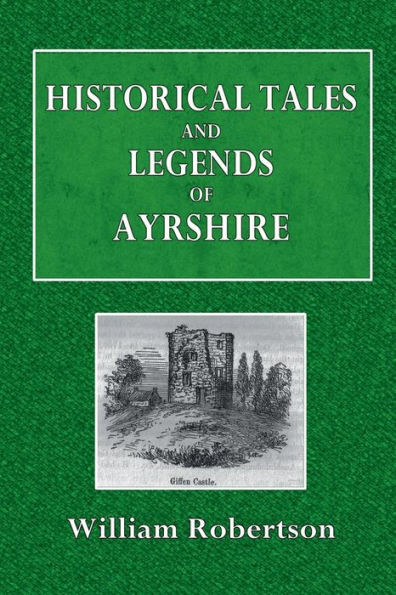Historical Tales and Legends of Ayrshire
From the Preface. The County of Ayr is rich in Story and Tradition. And no wonder. Before the days of the Romans it was inhabited; and from the time that these early progenitors in the march of civilization left these shores never to return, a succession of races have either dwelt on its plains or in its towns, and by its river mouths, or have left unmistakable traces of their presence. Pict, and Scot, and Briton; Danish rover and Scandinavian Viking; English invader from beyond the Tweed, coming and going at intervals down to the days when Oliver Cromwell was in the Fort of Ayr, and stabled his steeds under the shadow of St. John's-all have been here in turn. The Roman has left his roads and his camps, the Pict his dykes, the Celtic lake-dweller his crannogs, the Briton his tumuli, to tell the tale of a hardly recoverable past. Great national movements have inwrought themselves with the history of the Shire. On the streets of the county town and in the country surrounding, Sir William Wallace first seriously measured strength with the invader. Robert the Bruce was Earl of Carrick. He stormed Turnberry, the home of his youth, and he wrought wondrously among the hills of Dailly, on the uplands of Cumnock and of Dalmellington, and by the base of Loudoun hill. And in a less degree, down to the days of the Revolution, Ayrshire men were prominent in the wars and in the counsels of the period. It was to Ayrshire the Lollards came, with the leaven of a new faith. And the Reformation found many of its most ardent promoters among the gentry, as well as among the peasantry, of Kyle, Cuninghame, and Carrick.
1102926797
Historical Tales and Legends of Ayrshire
From the Preface. The County of Ayr is rich in Story and Tradition. And no wonder. Before the days of the Romans it was inhabited; and from the time that these early progenitors in the march of civilization left these shores never to return, a succession of races have either dwelt on its plains or in its towns, and by its river mouths, or have left unmistakable traces of their presence. Pict, and Scot, and Briton; Danish rover and Scandinavian Viking; English invader from beyond the Tweed, coming and going at intervals down to the days when Oliver Cromwell was in the Fort of Ayr, and stabled his steeds under the shadow of St. John's-all have been here in turn. The Roman has left his roads and his camps, the Pict his dykes, the Celtic lake-dweller his crannogs, the Briton his tumuli, to tell the tale of a hardly recoverable past. Great national movements have inwrought themselves with the history of the Shire. On the streets of the county town and in the country surrounding, Sir William Wallace first seriously measured strength with the invader. Robert the Bruce was Earl of Carrick. He stormed Turnberry, the home of his youth, and he wrought wondrously among the hills of Dailly, on the uplands of Cumnock and of Dalmellington, and by the base of Loudoun hill. And in a less degree, down to the days of the Revolution, Ayrshire men were prominent in the wars and in the counsels of the period. It was to Ayrshire the Lollards came, with the leaven of a new faith. And the Reformation found many of its most ardent promoters among the gentry, as well as among the peasantry, of Kyle, Cuninghame, and Carrick.
11.99
In Stock
5
1

Historical Tales and Legends of Ayrshire
358
Historical Tales and Legends of Ayrshire
358
11.99
In Stock

Product Details
| ISBN-13: | 9781663555151 |
|---|---|
| Publisher: | Barnes & Noble Press |
| Publication date: | 08/23/2020 |
| Pages: | 358 |
| Product dimensions: | 6.00(w) x 9.00(h) x 0.80(d) |
From the B&N Reads Blog
